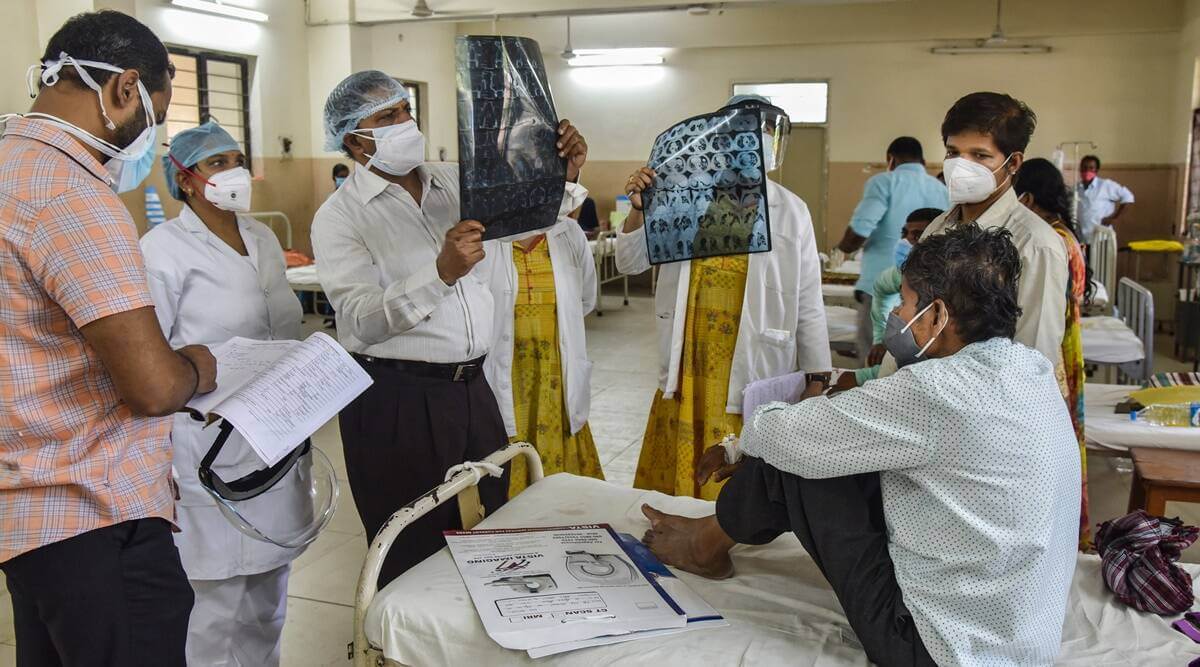On May 20, the Indian Health Ministry called on the state governments to declare the spread of mucormycosis, also known as the Black Fungus, as an epidemic under the Epidemic Diseases Act, 1897. The country’s Health Secretary, Lav Agarwal, communicated this in a letter written to the 29 states. Per the terms of the Act, the states will be required to report all suspected and confirmed cases of the Black Fungus infection to the health ministry. This will, in turn, allow the central government to be more closely involved in monitoring the spread of the disease and have a more integrated treatment plan.
The Black Fungus is caused by exposure to mucor mould, which is generally found in soil or plants. It directly impacts the sinuses, brain, and lungs. It is particularly concerning for patients who have diabetes or are consuming immunosuppressants. Symptoms include congestion, black or bloody nasal discharge, or discolouration of the nose. It can also cause blurred vision, shortness of breath, chest pain, fevers, headaches, and cough.
While the infection was previously relatively rare, over the past few months, India has reported thousands of cases of Black Fungus among recovered and recovering coronavirus patients. The disease also has a concerningly high rate of mortality of around 50% if it is not caught at an early stage. Doctors have said on many occasions that the only way of treating the disease and stopping it from spreading to the brain is to remove the patients’ eyes and jaws.
Medical experts believe that the rising number of cases is likely due to the use of steroids for the treatment of COVID-19 patients. The use of steroids has been rampant in India, with some specialists criticising the overuse of the drugs.
However, another reason for the rise in infections is the unhygienic administration of oxygen to COVID-19 patients. Medical oxygen, as compared to industrial oxygen, requires repeated “compression, filtration, and purification” to ensure that the oxygen is highly purified. The cylinders used to store medical oxygen should also be highly sterilised and disinfected. In addition, the oxygen should only be passed through sterile water. Failure to adhere to these guidelines could lead to people becoming infected.
Adding to the woes of patients and medical professionals, there has been a severe shortage of Amphotericin B, the medicine used for the treatment of the infection, with each patient requiring up to 60 vials. This has also resulted in the drug being rampantly sold in the black market, forcing patients to pay exorbitant prices for the medicine.
The infection has so far been reported in several states across the country, including Karnataka, Madhya Pradesh, Haryana, and Bihar. In Maharashtra, according to the state’s health minister, Rajesh Tope, there have been over 1,500 active cases of the Black Fungus, with over 90 fatalities. However, the exact number of cases across the country remains unclear.
Following the letter from Lav Agarwal, several states, including Tamil Nadu, Gujarat, and Odisha, have declared the Black Fungus as an epidemic. Telangana and Rajasthan made the announcement earlier this week.
As the country deals with the dual challenge posed by the COVID-19 pandemic and the Black Fungus, there have also been reported cases of White Fungus in Bihar. Experts suggest that the White Fungus is even more dangerous than the Black Fungus, and can affect several body parts, including the “nails, skin, stomach, kidney, brain, private parts, and mouth”. If the spread of the White Fungus is not curbed at the earliest by ensuring adherence to protocols while administering oxygen to COVID-19 patients, this could act as yet another blow to the Indian authorities’ attempt to contain the medical emergency in the country and further overwhelm the healthcare system.
Indian Health Ministry Urges States to Declare Black Fungus as an Epidemic
The Indian Health Ministry called on the state governments to declare the “black fungus” as an epidemic, reasoning that it is causing “prolonged morbidity and mortality among COVID-19 patients”.
May 21, 2021

SOURCE: PTI
